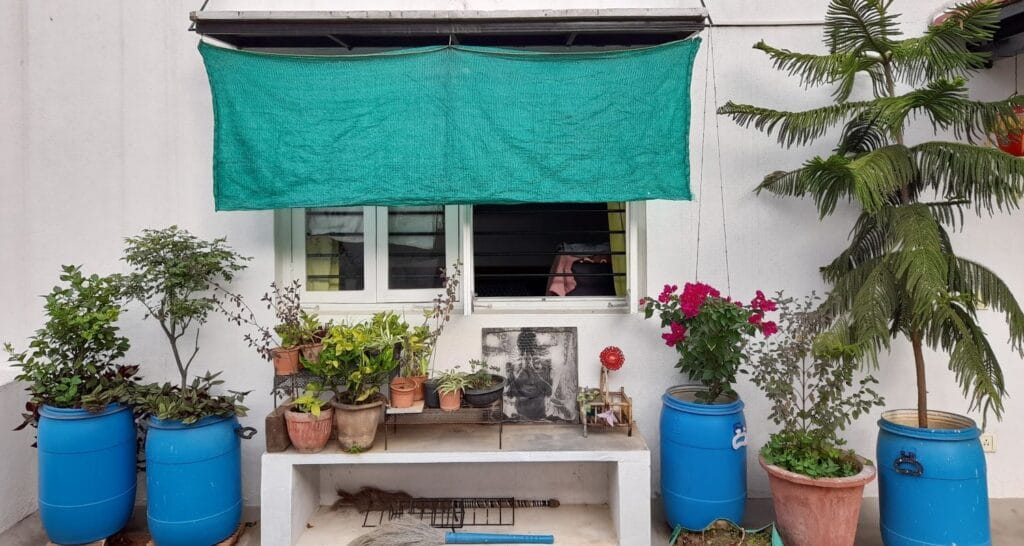Part 3: Butterflies in my garden
Lesson learnt: Don’t admire the butterflies in your garden or you might be sharing your plants with caterpillars, voluntarily or otherwise!
Many Bengalureans may be aware of the seasonal migration of butterflies through the city. We discovered this when our terrace garden became a favoured wayside halt for the painted lady (Vanessa cardui) and lemon emigrant (Catopsilia pomona) butterflies, for a few seasons. Although we were visited by other species, including the common Mormon (Papilio polytes), the former two were the most frequent.
The emigrants usually remained well-camouflaged in the bougainvillaea till we almost walked into them, when they would quickly fly away and eventually settle back. In contrast, the painted ladies would dance around our lemon and curry trees.
Read more: My family and other insects: The perils of ecological living
The first time they visited, I was excited over the opportunity to conduct a backyard ecology lesson and pulled my reluctant daughter outside to see the butterflies dance. She didn’t seem impressed but took pity on me and made it a point to call me whenever she saw them in the garden. A few days after the butterflies left, I noticed that the lemon and curry leaves were decimated!
I realised it was caterpillars but didn’t make the connection with the butterfly visitors till much later. Still being green (warrior) and green (inexperience as far as insects are concerned), I decided much like I did with the ants — how much could a few caterpillars eat? Turns out, a lot and overnight at that! Consequently, they also deposit a lot of frass (excrement of insect larvae).
And new life emerges…

Within a week the tender shoots of the lemon and curry trees were non-existent and if I attempted to dislodge a fat green caterpillar, it would menace me with its red-tipped antenna. I was fighting a losing battle and gave up on my trees for that season. A part of me also welcomed the opportunity for an extended ecology lesson, despite my daughter’s disinterest.
Thankfully, both plants put out new shoots and grew strong again after the caterpillars transformed into pupae and eventually butterflies. Despite keeping watch, we missed the butterflies emerging from the pupae and so, couldn’t tell which species was the culprit. I also discovered later that the rate of attrition of eggs to butterflies was rather high. Based on my own experiences, I’m guessing well over 90 per cent. Hundreds of eggs to a few dozen small caterpillars to maybe 10-12 big ones to two pupae.
Next year, the butterflies and the inevitable caterpillars returned as the denuded curry and lemon trees bore witness. That’s when I decided to do some homework and check which butterfly species favoured these two trees as host plants. And surprise, it wasn’t the showy painted lady or the plainer emigrant but the sneaky Mormon!
Read more: The house we built: Living amongst the trees and the beetles
Although an odd visitor along with a couple of castors and three-rings, they were the culprits! I decided to sacrifice one branch of the curry and lemon trees each, to the caterpillars. Although they were planted in tubs, the trees had grown considerably by then. The uneasy relationship continued for some years, till one season when the number of visitors dwindled. Next year, only the emigrants came. I’m hoping the reason is a change in the migratory route of the butterflies and not an adverse ecological phenomenon.
Lessons in ecology
Like most people, when life gives us lemons, we make lemon juice! So, for our daughter’s primary school project for one year, she chose — butterflies! She wrote a poem and a note on metamorphosis; I helped her draw a few of the species and we both learnt the difference between moths and butterflies. A few differences surprised me, for not all moths are dull and not all butterflies are colourful.
We learnt that moths have feathery antennae unlike the thin long ones of butterflies and that moths rest with their wings open, unlike the butterflies. It was a good project and well-received.
However, the most vivid memory of those few seasons is of the big green caterpillars menacing me with their red-tipped antennae, which would shoot out as soon as I approached the plants. I wouldn’t be surprised if they knew me as a frenemy for, I must admit that after all this time and after so many encounters I find it difficult to wax over insects.
Notwithstanding the daily battles I have with them over the webs they build all over our tiled-roof ceiling, quickly giving it the appearance of a haunted house, spiders might just be an exception. And before any natural science enthusiast or researcher jumps up to denounce me, I learnt by harbouring spiders that they are not insects, after all.